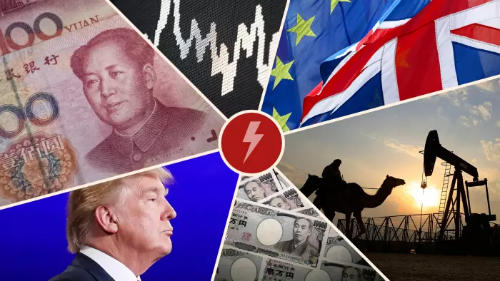The market’s risky bet on stability

Financial Times, April 27, 2017
By Christian Pfrang and Robin Wigglesworth
The relief with which markets greeted the victory of centrist Emmanuel Macron in the first round of France’s election this week has only sharpened the appeal of a trade whose popularity is also raising fears of turbulence should it unravel.
Selling insurance against the risk of sharp price movements across markets has been an easy and profitable trade in recent years, helping portfolios generate additional returns during the era of ultra-low bond yields and significant underperformance by many hedge funds and other active investors.
As a result, a once niche strategy has become very popular, according to analysts and fund managers. “These strategies seem to be gaining traction with investors across the world, in all channels,” says Doug Kramer, co-head of quantitative investing at Neuberger Berman.
Betting against bouts of market turbulence comes in many shapes. Volatility carry essentially consists of systematically harvesting an insurance premium from investors willing to pay up for protection through derivatives known as options. Options either give buyers the right but not the obligation to buy an underlying asset at a certain price (a call), or to sell it at the pre-agreed price (a put).
Over long periods of time, selling options tends to be a profitable endeavour. As long as the volatility implied by option prices is higher than actual, realised volatility — which it tends to be — then option sellers can make money. That is usually the case even in calm times, when insurance is cheap.
Indeed, “the embedded risk premium tends to be proportionately higher during such periods”, says Roni Israelov, managing director at AQR.
Still, selling volatility can cause grievous losses when turbulence erupts, much like how insurers have to compensate policyholders when an earthquake strikes. Unlike insurers, who have decades of experience measuring, managing and offsetting the risks of massive payouts, some analysts worry that many investors playing the volatility trade are ill-prepared for a sharp or sustained market reversal.
The biggest fear is that the popularity of the volatility trade poses broader risks to the financial system.
Potentially destabilising interactions could occur with the array of volatility-focused products that have been rolled out in recent years. Various ETN whose values reflect Vix futures are convoluted, but have brought volatility trading to the retail masses. Some analysts blamed them for exacerbating the US stock market’s slump in August 2015.
Stricter regulations and risk management procedures introduced after the crisis might — counter intuitively — also add instability. Limiting one’s risk exposures and being disciplined in cutting lossmaking positions makes sense individually, but a collective shift at the same time is another matter.
Dietmar Peetz at Credit Suisse Asset Management says that “most financial pain comes from herding, leverage and exposure to asymmetric risks. If investors during shaky markets scramble to simultaneously cover the options they sold, this synchronous behaviour can exaggerate losses.”
Firm numbers on the volatility-carry strategy are hard to untangle from the broader options market. Still, the “short” interest in VXX, a popular exchange-traded note linked to the Vix index of expected short-term volatility, is a decent proxy, given that betting against it mimics the risks and rewards of a volatility carry trade. The ETN’s short interest has outpaced the creation of shares in the past year, highlighting the rising appetite to bet against volatility.
Another related but different volatility strategy — mutual funds writing options on stocks they hold to generate extra returns — has also grown in popularity. Deutsche Bank estimated last month that the US alone, equity funds with $45bn of assets under management juice up their returns this way. That is up from about $10bn before the financial crisis.
Carry strategies also suffer if the volatility implied by the market rises. Sharp price movements in the underlying asset can also lead to losses. This is because in order to isolate — and earn — the volatility risk premium investors protect themselves against the direction, but not the magnitude of asset price moves.
Concerns over complacent risk-taking by volatility sellers are rising in tandem with the falling price of such insurance. The Vix index is a good gauge of the cost of such protection, and has averaged just 12 this year, compared with its long-term average of about 20, and fell to a year-low of 10.22 this week.
Jim Keohane, the chief executive of the Healthcare of Ontario Pension Plan, compares selling volatility to picking up dimes in front of a steamroller. “You are not getting paid a lot in the current market for the potential to get killed. That can happen very quickly,” he warns.
That is why Mr Israelov recommends investors take a patient, steel-nerved approach: “Exposure should not be transient, investors should be in it for the long run and they should be informed about and able to stomach inevitable periods when such strategies lose money.”
Back